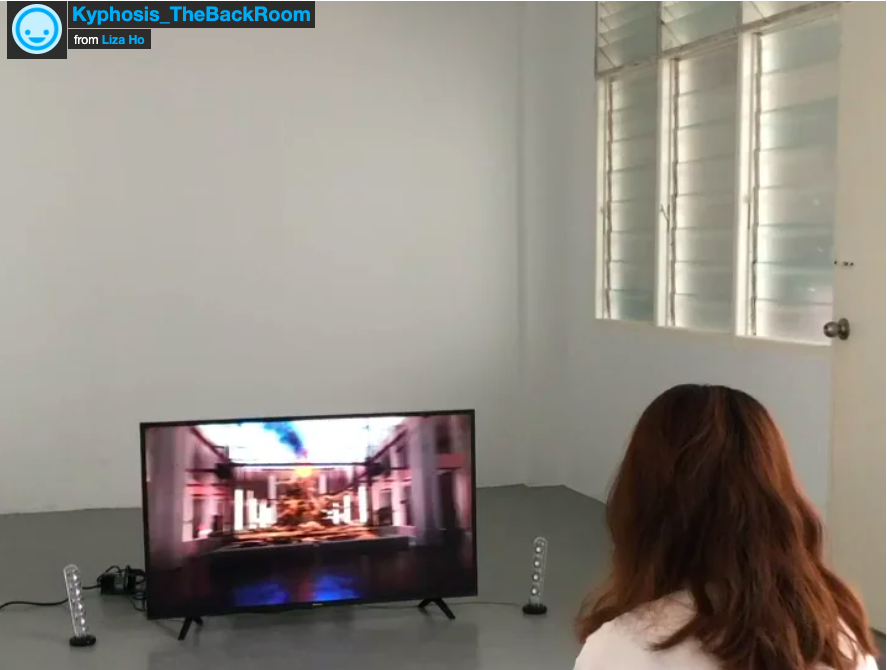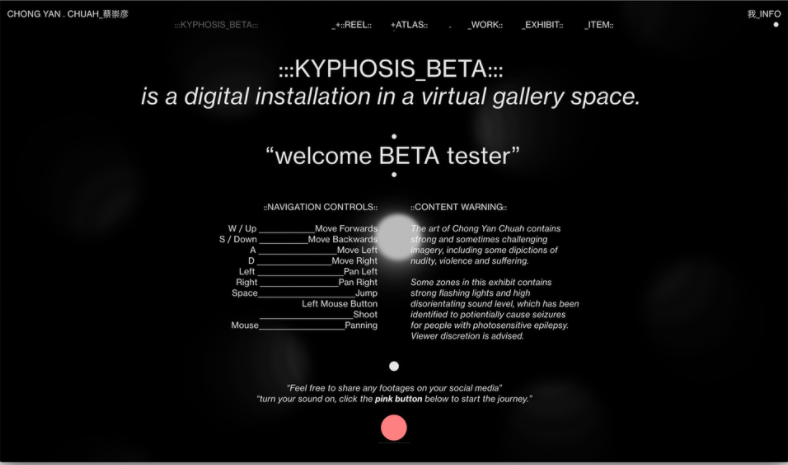
By CLARISSA LIM KYE LEE
“A reflection upon the virtual is what guides our understanding of the real (or actual), while also retroactively affecting – and hence illuminating – the antecedents and the necessary preconditions of that reality” (Lefebvre 1991, p219)
Online exhibitions are becoming ubiquitous with now-cliche terminologies such as “the new normal”. And yet, the shift towards virtuality for the visual arts, with its necessary reframing and reflection, brings about exciting possibilities. This is the first of a series that examines two digital exhibitions in order to draw intertextual narratives of South-East Asian visual art practices as it shifts to the digital.

Lefebvre inextricably ties a dialogical relationship between the physical and the digital realm. There is also a constant feedback loop where one would conduct meaning-making as the threshold is crossed between these two realms. The pandemic has shifted the idea of physical space away from the gallery-studio-museum trifecta. Curating, exhibitions and art practices have shifted to a nebulous in-between but also stand on a plurality of possibilities.
Expanding on these possibilities is Chong Yan Chuah’s exhibition, Kyphosis, through a Looking Glass at The Backroom KL, which straddles both the physical and the virtual. The exhibition is set up in a virtual gallery space which presents as an explosion of bodies, aflame, expressing the very own corporeal self stuck in a dimension. Originally conceived on the game development platform Unreal Engine, the exhibition is presented as a virtual simulation, inviting the visitor to enter the premises of an empty gallery, pick up a controller and begin their adventure syncing into the virtual world Chong has created.

In this in-between space of physical-yet-virtual, which parallels our pandemic lifestyles, the stationery bodies in the game, adorned with frozen expressions, are aptly uncanny, humanoid and still. ‘Kyphosis’ is a spinal disorder in which the curvature of the spine begins to hunch, mirroring the overwhelming need to curl deeper into our digital screens just to peer through the ‘looking glass’ stepping through a portal into an alternate world.
The exhibition challenges the new rituals of creating and going to an exhibition, shifting from an institutional and spatial relationship to a combinatory flattened moving-scrolling-reading.
In contrast, “Figure-Proof” by A+ Works of Art gallery, curated by Carlos Quijon Jr., flattens the distinct delineations set up by institutions of the modern art world. Creating smaller, intimate and immediate works are indications of the interiority of art practices during these times, which transgress into more informal and present modes of production. The artists discovered the need to weave the immediacy and emotional responsiveness of the pandemic through their art practice. Celine Lee experimented with household bleach – a solution used to disinfect and clean – to dye and stain the abaca paper which she had at home. Miguel Puyat constructed found objects into a process-orientated piece, creating a framed glass interactive contraption where the assemblage of paper stops, settles and casts a shadow below. The piece is responding to our intimate relationship with daylight – an ode to our current lack of access to the much-needed vitamin D. Pam Quinto exhibited existing works due to lack of access to a kiln and materials to create artworks with.

Quijon Jr. reconfigures the term “proof”, in relation to the resistance of the figurative. The exhibition gives five young artists practising in all corners of the Philippines archipelago an opportunity to be in a show together, registering a notion of resistance as an act of “proof(ing)” one’s practice from the boundaries set up by the pandemic, conventional exhibition making and unpacking the constant need to “figure things out”.
Both exhibitions, held earlier this year, lie within the digital realm, decentering not only the institutions of the art world, but also the retroactive act of reflection, intimacy with the individual. The shift towards virtuality begs us to reconsider the primacy of physicality for art and cultural practice: art-as-object, gallery-as-space and museums-as-institution. Many South-East Asian art and cultural practices are now reckoning with these shifts, revealing the need to weaken institutional divides and power structures as a result from the prevailing pandemic.
The artists in these two exhibitions are young and emerging, settling into an art practice and exhibition making that requires us to rethink our ways of being as we soar through the smoothness of the Internet. A blue hue of the LED screens, and our eyes adjust to the flatland of the Internet browser. From iPad babies to digital migrants, the experience of art and cultural work is changing into a hybridized push and pull of the physical and digital.
For more on Kyphosis, visit https://www.thebackroomkl.com/projects
For more on Figure-Proof, visit http://www.aplusart.asia/viewing_rooms/figure-proof
Clarissa Lim Kye Lee is a writer in the CENDANA-ASWARA Arts Writing Mentorship Programme 2020-2021
